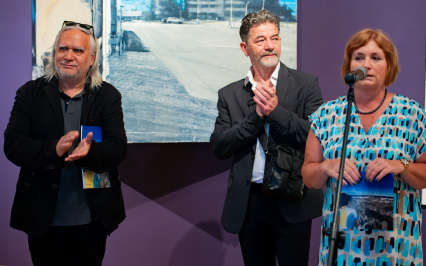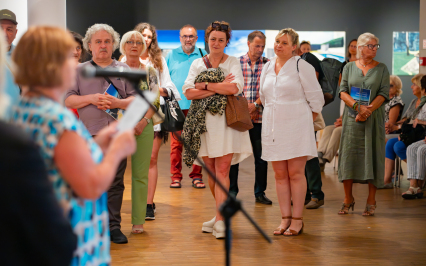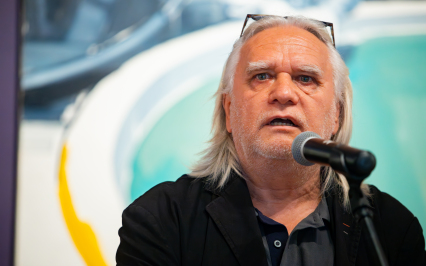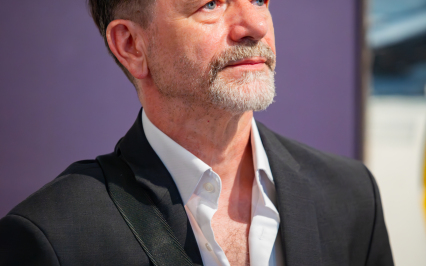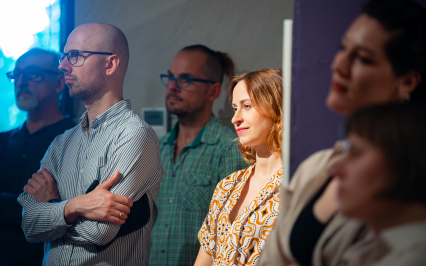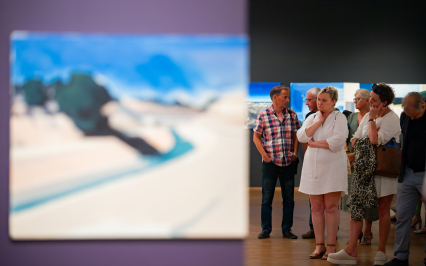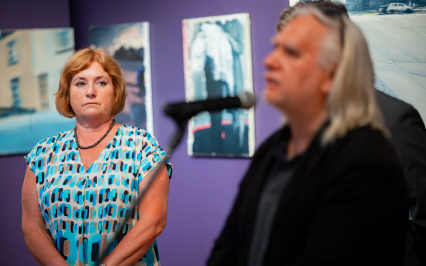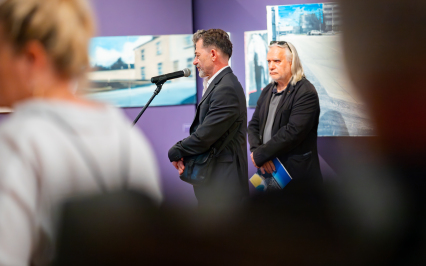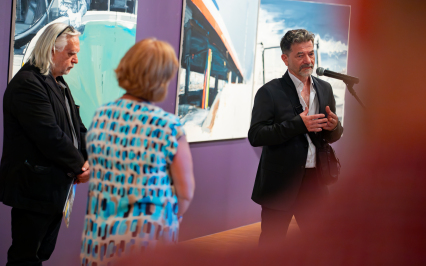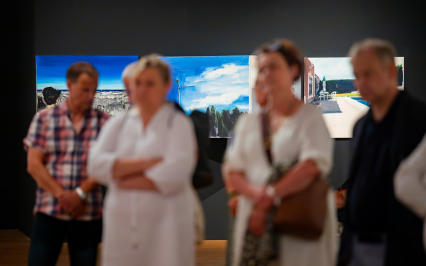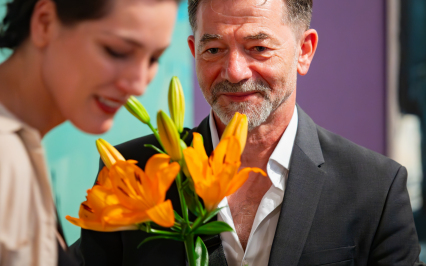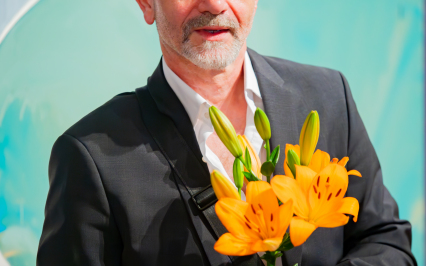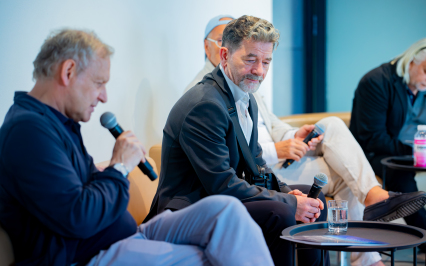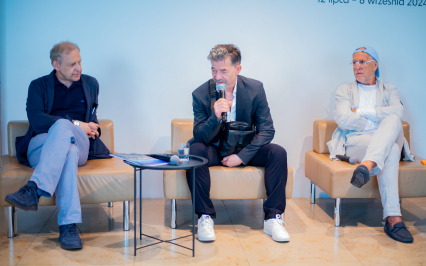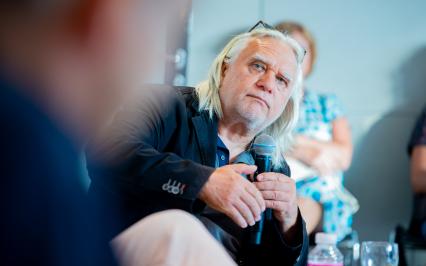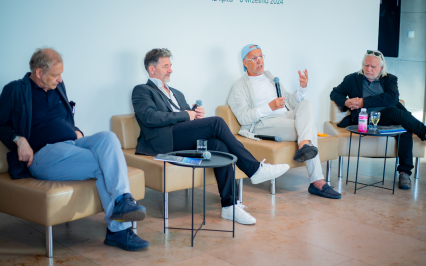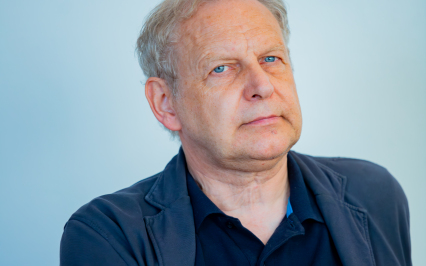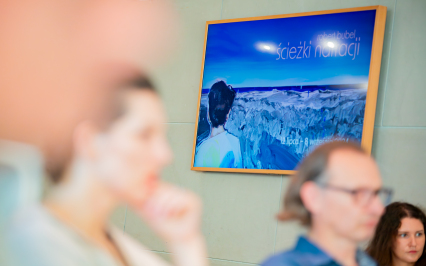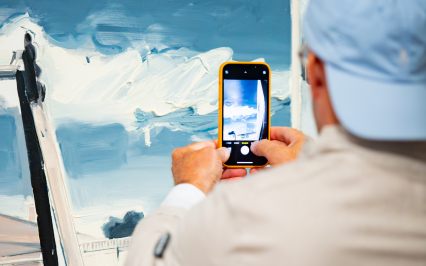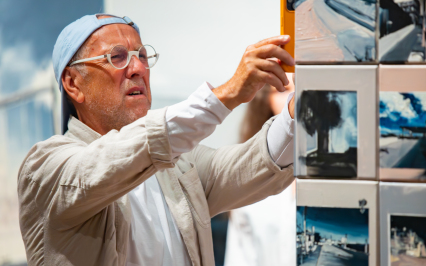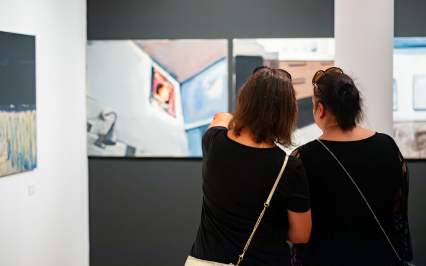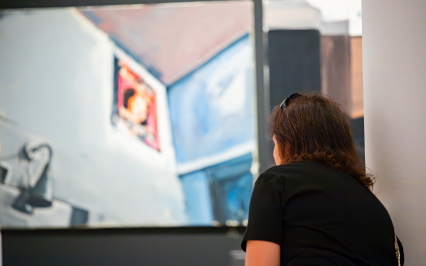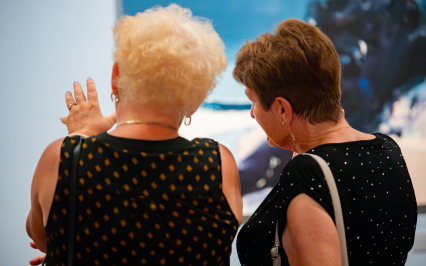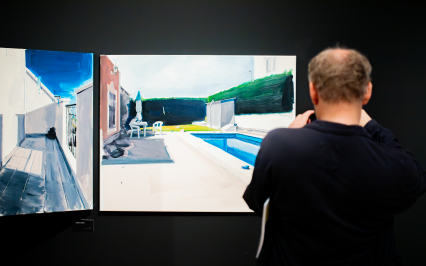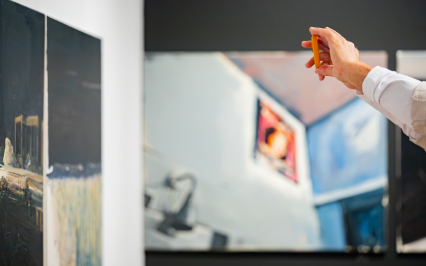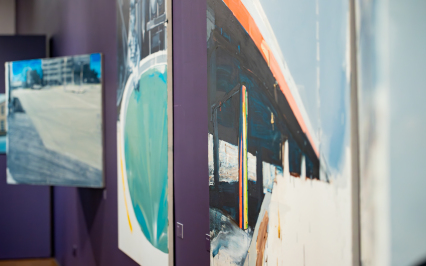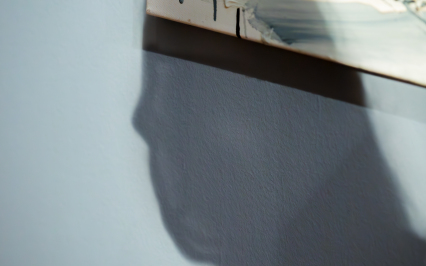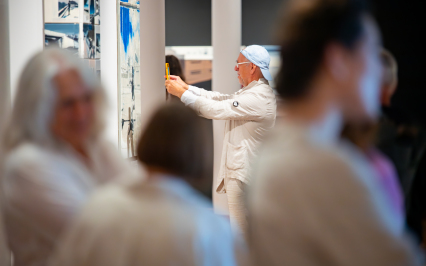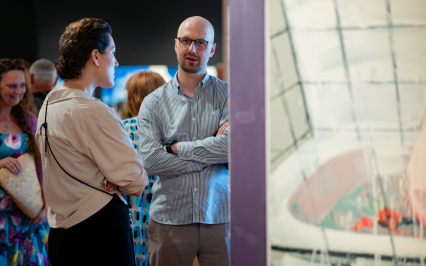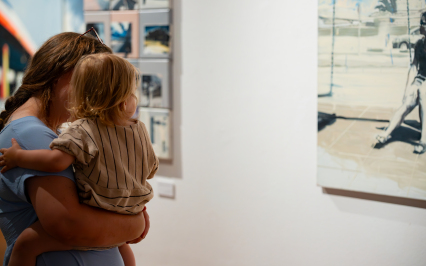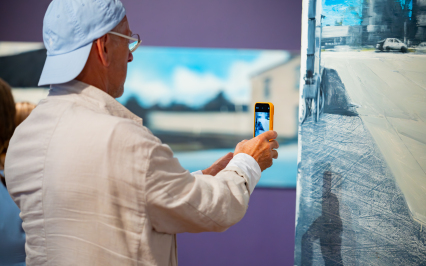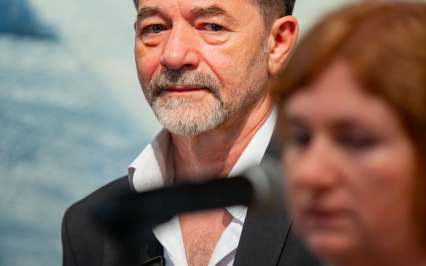NARRATION PATHS
12 July - 8 September 2024
Contemporary Art Gallery BWA SOKÓŁ
vernissage:
12 July 2024, hour 18:00
An exhibition of paintings by Robert Bubel - “Narration Paths” - is underway at the BWA SOKOL Contemporary Art Gallery. We present a selection of this artist’s works from past ten years, inviting you to read his own exhibition statement:
One must have a reason to paint. In fact, a number of reasons which, in varying proportions make up that main reason. Can we name it? Can the artist? Maybe so, or maybe not, but that is not what matters. It is because the language of concepts is not always adequate and oftentimes, it barely signals the meanings embedded in painting.
We paint out of conviction that we must convey something important. Something important to us. But does this expression carry such weight or significance? – this we learn from the reaction of viewers. Those who look at the painting, experience and interpret it in their own way. Because art is also – or perhaps mainly? – a form of interpersonal communication. Though not expressed in words or concepts, it is potentially powerful in its impact on us.
The art of painting is not like straight talk; it is multifaceted and can be multivalent. But does this make it different from human experience? But does this make it distant from human experience? Does not the metaphor in poetry name matters and things which our simple, logical language avoids, out of powerlessness?
It is my understanding that what a painting shows is a pretext for the artist to state something significant. A painting asks questions more often than it give answers. It moves, stirs up emotions and forms associations – if it is good and if it works. Otherwise, it is merely a decoration.
Every painting tells a story. Or rather, many stories. Metaphorically and not directly, using painter’s mediums of expression. Regardless whether it is a figurative, or abstract language. And it is that history that appeals to the viewer for a reaction, invites them to co-participation and it works on them. These stories form a narrative that leads down various paths. Destinations and the point of view change in time, evolve, change in aspect and in the means of expression. And it is these paths along which the viewer is guided by the art of painting. Provided the viewer, obviously, will be willing to follow. And if the painting works – if it has that power to draw the viewer into the world of its meanings. Because if not, what remains is only a decoration.
Robert Bubel
(ed. AK)
We paint out of conviction that we must convey something important. Something important to us. But does this expression carry such weight or significance? – this we learn from the reaction of viewers. Those who look at the painting, experience and interpret it in their own way. Because art is also – or perhaps mainly? – a form of interpersonal communication. Though not expressed in words or concepts, it is potentially powerful in its impact on us.
The art of painting is not like straight talk; it is multifaceted and can be multivalent. But does this make it different from human experience? But does this make it distant from human experience? Does not the metaphor in poetry name matters and things which our simple, logical language avoids, out of powerlessness?
It is my understanding that what a painting shows is a pretext for the artist to state something significant. A painting asks questions more often than it give answers. It moves, stirs up emotions and forms associations – if it is good and if it works. Otherwise, it is merely a decoration.
Every painting tells a story. Or rather, many stories. Metaphorically and not directly, using painter’s mediums of expression. Regardless whether it is a figurative, or abstract language. And it is that history that appeals to the viewer for a reaction, invites them to co-participation and it works on them. These stories form a narrative that leads down various paths. Destinations and the point of view change in time, evolve, change in aspect and in the means of expression. And it is these paths along which the viewer is guided by the art of painting. Provided the viewer, obviously, will be willing to follow. And if the painting works – if it has that power to draw the viewer into the world of its meanings. Because if not, what remains is only a decoration.
Robert Bubel
(ed. AK)




